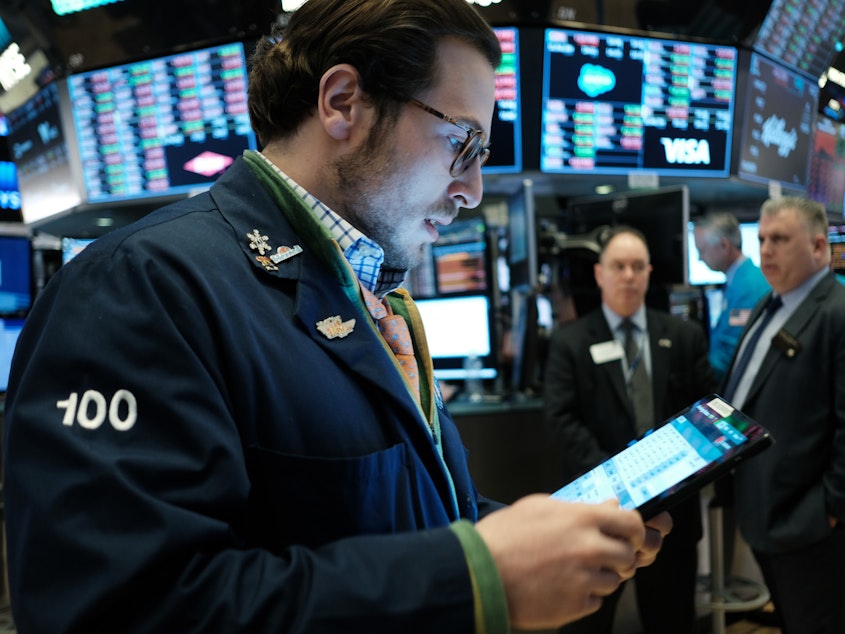U.S. Stock Market Ticks Up After Steepest Drop Since 1987

The Dow Jones Industrial Average recovered slightly on Tuesday, a day after its stunning record plunge of nearly 3,000 points. The blue chip index opened up about 400 points but pared its gains. In late-morning trading, the Dow was up about 200 points, or 1%, and the S&P 500 was up about 2.7%.
Updated at 10:51 a.m. ET
The stock market rose as the Trump administration was expected to propose a stimulus package of $850 billion to deal with the coronavirus outbreak's economic damage.
The measure — which would be the biggest since the 2008 financial crisis — was expected to include $50 billion to help the U.S. airline industry, which has been battered by travel restrictions and cancellations.
Markets have been gyrating for weeks on increasing fears over the pandemic.
Sponsored
From restaurants to airlines, employers have been crushed by a sudden halt in their business as governments order tough measures to keep people apart in an effort to stem the spread of the coronavirus. A recession is looking more likely by the day.
The Federal Reserve has been slashing borrowing costs — moving a key interest rate to near zero on Sunday — and pumping hundreds of billions of dollars into the banking system to keep credit flowing.
But on Monday, the Dow fell about 13% — its biggest drop since the Black Monday crash of October 1987. The single-day loss of 2,997 points was the most in the Dow's history.
Markets in Asia and Europe were mixed.
NPR's Scott Horsley contributed to this report. [Copyright 2020 NPR]



